• Based in Brooklyn, NY, Caleb is a leader and core member of several bands, including Ember, Orrin Evans & The Captain Black Big Band, Walking Distance, and the Fat Cat Big Band
• 2021 MacDowell Fellow
• Bachelor's of Music in Jazz Studies and Master's in Music in Jazz Performance
• Website | Bandcamp | Instagram
Caleb Wheeler Curtis's latest double album, The True Story of Bears and the Invention of the Battery, is a visionary work showcasing Curtis's versatility as a saxophonist, multi-instrumentalist, and composer, presenting two distinct musical worlds within a single release.
The first disc, Bears and the Invention of the Battery, presents Curtis's original compositions. Here, he continues his career-long exploration of the possibilities of the trio format, embracing the space and flexibility it provides.
The second disc, Raise Four: Monk the Minimalist, reinterprets the music of Thelonious Monk, an artist Curtis has long admired. In a bold move, Curtis chose to interpret Monk's compositions without a pianist. This decision both honors Monk's idiosyncratic style and opens new avenues for exploration.

Curtis's multi-instrumentalism adds depth to both halves of the album. His proficiency in saxophone, trumpet, and sopranino saxophone allows him to create diverse textures and timbres.
As Curtis continues evolving as an artist, his work bridges jazz's rich history and boundless future possibilities. Our recent talk examines his work at this nexus and so much more.
Lawrence Peryer: What's going on with the sprawling nature of what you're doing here? And what's the ambition behind pairing these two trios and different sets of repertoires together?
Caleb Wheeler Curtis: They're different in their material and the thematic elements, but I hope the playing comes from the same places. It's a way to bring those things together. Maybe the instinct is to say, "Here's a distinct jazz record of Monk tunes, and here's a contemporary improvisation record of Caleb's music." Caleb's Somehow, they're fundamentally different, but I want to make the point that they're not distinct.
Part of it is me trying to deal with the fact that I love both of these [musical] realities. I have loved Thelonious Monk's music forever; part of it is just gratitude to him for these pieces and wanting to explore his music. The question is, "How do I find the right way to do that at the right moment and with the right people so that it feels good to me? Where can I bring something to it?"
We take those songs, express our gratitude, and find something that feels less like a tribute and more like an exploration. I love these pieces of his, especially the ones that are very minimalistic. They have almost nothing in the melody, but they create these characters like the tune "Oska T," which is just this one phrase over and over. As an improviser, that creates a world for you to explore.
It's the same music, all part of one big thing.
Lawrence: So much of your work is the configuration of the trio format. I can certainly understand why—as a horn player, it's an intriguing space. Could you talk a bit about what excites you about the trio format and how it shapes your thinking compositionally? Does it lend itself to this minimalist approach?
Caleb: Yes, I think it does. One part I like is the absence of the piano, a guitar, or even another horn player and how it creates many more opportunities for something verging on silence.
There's not a lot of silence in these two albums, but sparseness makes everything else more important. Every time you add a person to a group, it is much harder to maintain that essentialism for each note, in the melody or otherwise. There's also something that happens when I'm writing, composing for a trio, and I'm just thinking about the rhythm, the rhythmic context, the rhythmic world, the part for the bass and the part for me, how those things combine. I don't need to clarify the harmonic landscape they would exist in for a pianist to play.
The trio allows for that space between the bass and saxophone registers to be discovered as we play or for everyone to experience that relationship. It could be that the bass and saxophone are very far apart, so they're running parallel tracks, and they don't have to be in the same harmonic landscape.
If you don't need someone to connect them, you can have two different voices doing different things. And that creates a character. It puts us all in a musical world that can be intriguing, and I think intrigue is really where I want the musicians and audience to be.
Lawrence: In keeping with the trio format, there's less pressure or onus on you to function constantly as a leader from the perspective of conducting the music or having to be overly willful.
Caleb: This is the first time I've led a band through the process. I've done that a lot with cooperative groups, with Ember, and with an old band I had called Walking Distance. There's something there where it's a little less risky because you've got other people who are responsible and are taking on just the artistic risk of what you're doing.
 Spotlight OnSpotlight On
Spotlight OnSpotlight On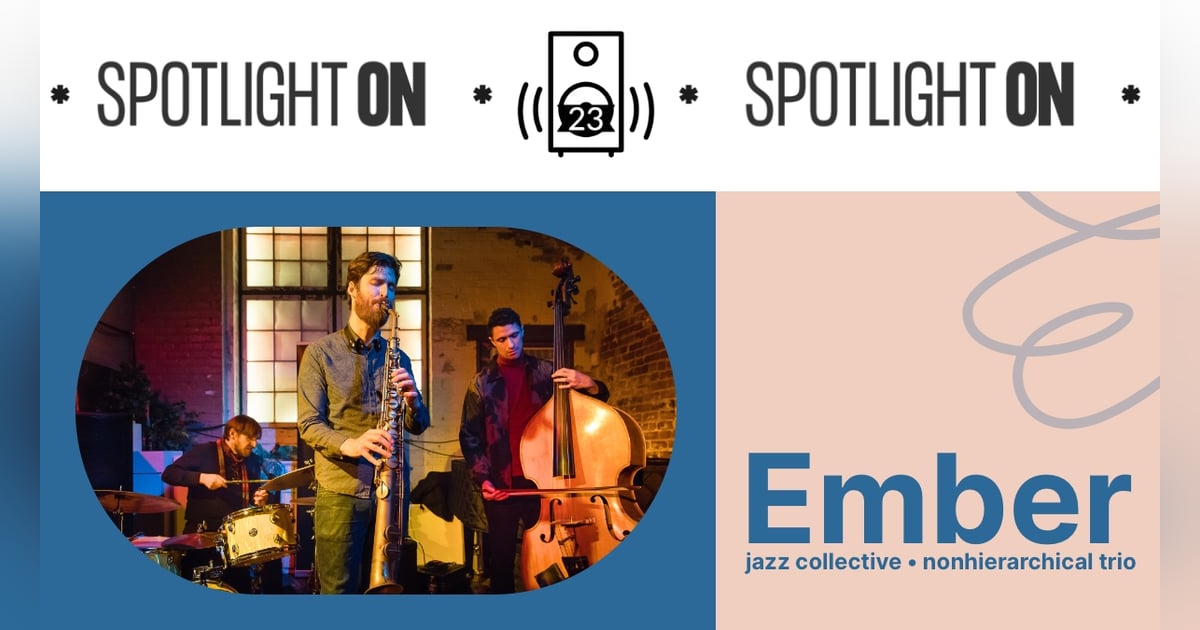
So, it is my job to be clear about what I want. It's my responsibility to create the lane for everybody and ensure that the musicians understand that I want them to play however they want. They're in the band because of how they play, not because I think they can execute my vision for the sound of the music.
If I don't guide us, we just go through the normal social interaction of a trio. The first thing that you talk about is our instincts. If I don't say anything, we'll just do instincts, which is cool. Sometimes that's what we need. I don't want to say that having fewer people to direct is easier or simpler. It means that I need to know what the pieces are about regarding their sounds or what kind of direction I can give them so that they understand why we would play that piece instead of some other song or melody. How are we going to turn this one piece of sheet music into a piece of music that is five minutes long?
Lawrence: The first two tracks that are available from the new album each feature two different trios. How is it different working with the two trios, and how is your experience different in those situations?
Caleb: The first single, from disc one, is called "This Cult Does Not Help." The other one is "Oska T," the Monk tune. The two songs have something in common, something I wanted to be present for: they're both swinging. I love swinging music, and both of these trios have a great swing feel, but they're different.
My goal is to enjoy it. I just want them to enjoy it and for me to enjoy myself. If we can do that for a whole take, then the music will be good, and that's not hard with those guys.
That's what I want because I'm not interested in being some kind of musical dictator or thinking I know how they should play. I want to get to the root of the tune, the essential part of the song.
Of course, the time fields between the two groups are different. It changes something. There are rhythmic things that Sean Conly (bass) and Michael Sarin (drums) will do that Eric Revis (bass) and Justin Faulkner (drums) aren't going to do. It's going to affect how I play. There's something that they do at the beginning of the saxophone solo on "This Cult Does Not Help" that I noticed later that I'm not sure Eric and Justin would do.
 The TonearmLawrence Peryer
The TonearmLawrence Peryer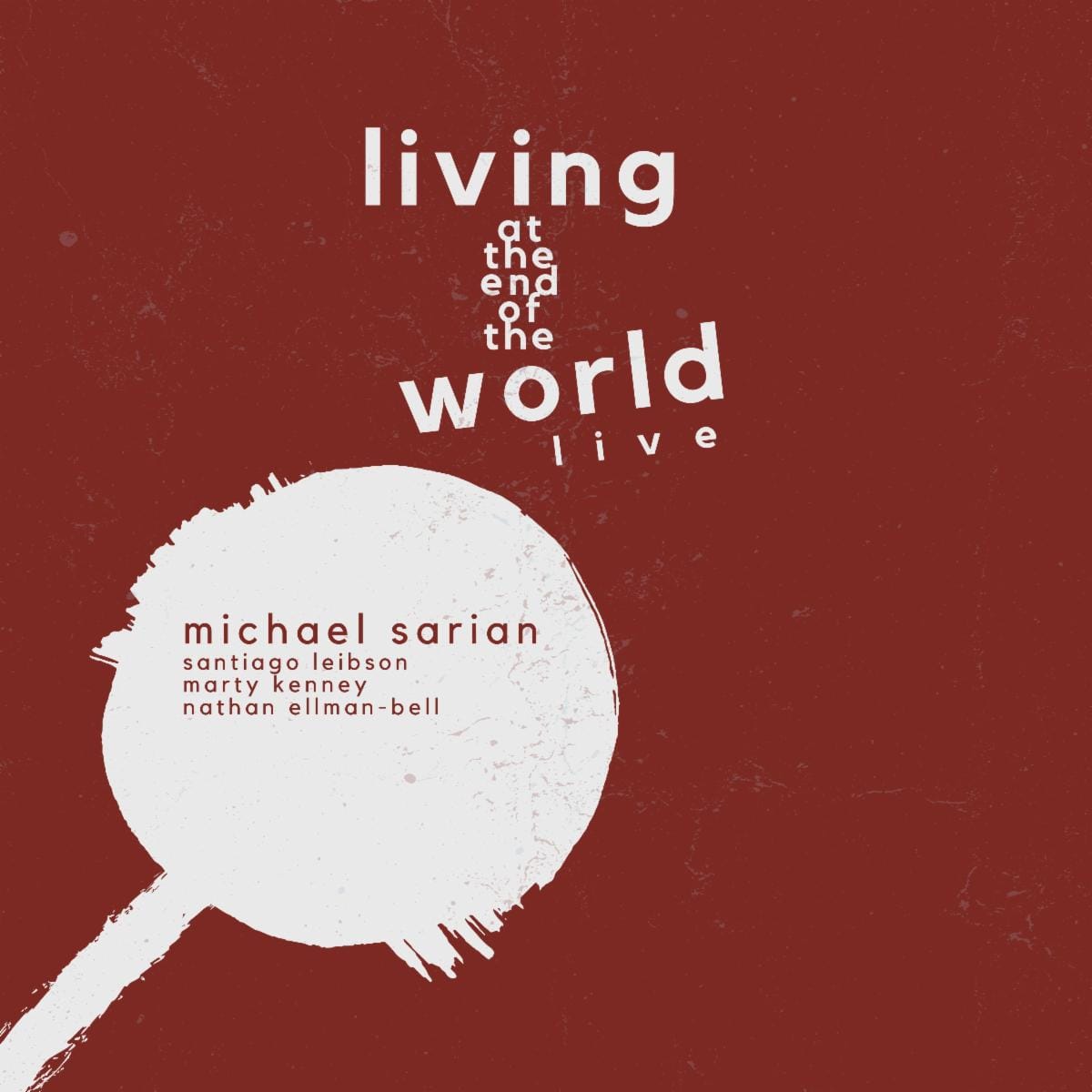
They're different, but they're not so different. They're not from a different planet. They're still playing jazz music. We're still playing black music. It still comes from the same types of grooves and the same feeling. We all want the music to have momentum, a pulse, and to be grounded inside the rhythm.
Lawrence: Could you talk about what the various instruments you play unlock for you? I wonder if you'd be comfortable elaborating a little bit about the different emotional experiences of playing the trumpet.
Caleb: I think it starts first from a really strong, intense interest in the sounds I can get from the saxophone. One thing that we struggle with as improvisers and jazz musicians is how to individuate ourselves from the recordings and our influences and to find what people often call "your own voice," "So it was like, how do you foreground this thing that makes you speak in our own personality? The first thing that I felt gave me entry to that way of expressing myself musically was exploring the different sounds of the saxophone, not the notes. What are the timbres I can get out of the instrument?
What are the dynamics I can get going to be? Sweet, soft, aggressive, pushing, extended techniques, and whatever I can get is a vocalization of the instrument. And I discovered that all my favorite players are very vocal. They use a lot of inflection. They have a very affected way of playing the notes that show their personalities. That started this process for me. Once I realized that would be important, I could start trying to work on that, push the boundaries of that, and then put that into the music. This is the first kernel.
I started playing trumpet because I was under the impression that everyone thought it was impossible to play trumpet and saxophone. I had gone through this experience where I felt like I had learned to play the saxophone by just spending time on it and then being focused on how to do it efficiently.
When I first started, I thought, "In 10 years, I'll be able to play a little bit," Now I'm getting close. I first got a horn in 2011, so it's been over ten years, but I didn't start practicing until maybe six or seven years ago. Then, I started playing in public. So now we're getting into the sound thing and the emotional difference in the trio. And sometimes I'm just tired of hearing saxophone in the music.
I have a friend and a bit of a mentor at a certain time in Brooklyn, a great trumpet player, John McNeil, who just passed away a couple of weeks ago. One thing he told me, and he told many people this, was when you're playing, you listen to what the music needs, and then you play that. The music is demanding something from you. Sometimes, the music demands that I don't play saxophone because it's just enough. Enough is enough.
I've spent so much time practicing saxophone, studying in school, learning the ways to play, and developing virtuoso technique and ability with an understanding of the instrument. That gives me some emotional strength and confidence when I play. But I do not have that experience with the trumpet. When I first started playing it in public, I would be shaking and have dry mouth. I felt like I was 12, playing my first gig at the mall. Having to confront that level of insecurity and being a beginner and the real true possibility of failure is something that I've gotten a lot better at; I don't tremble in my boots and have dry mouth anymore, but I am still not sure how it's going to go when I play the trumpet.
Considering how long I've been playing the instrument, I feel remarkably good. Still, I do not have the level of strength on the trumpet that I do on the saxophone. It introduces vulnerability and other emotional elements into the music because that's what I'm experiencing. Sometimes, when I play, I don't know if I can do it, or I have to think way more broadly about what I'm doing constructing something.
I wanted to play sopranino saxophone because when I got the straight alto, the stretch soprano just didn't seem different enough. I would be like, "What's the point of this?" And then I got the sopranino and thought, "This is different. Like, this is something crazy."
That instrument is hard to control, but it's still a saxophone. It's so small that anything you do physically while playing with your body or the embouchure in your mouth has a huge effect. The instrument is very flexible, allowing me to play it differently than the others. It's so high that it cuts across the band.
I would like to create intrigue in the music and on the bandstand where the listener is going, "What is that? How many people are in this band? What instrument is being played? Wait, I thought it was a saxophone player in this band. Why is there a trumpet player? Is someone sitting in? Is this all just one take? How did this happen?"
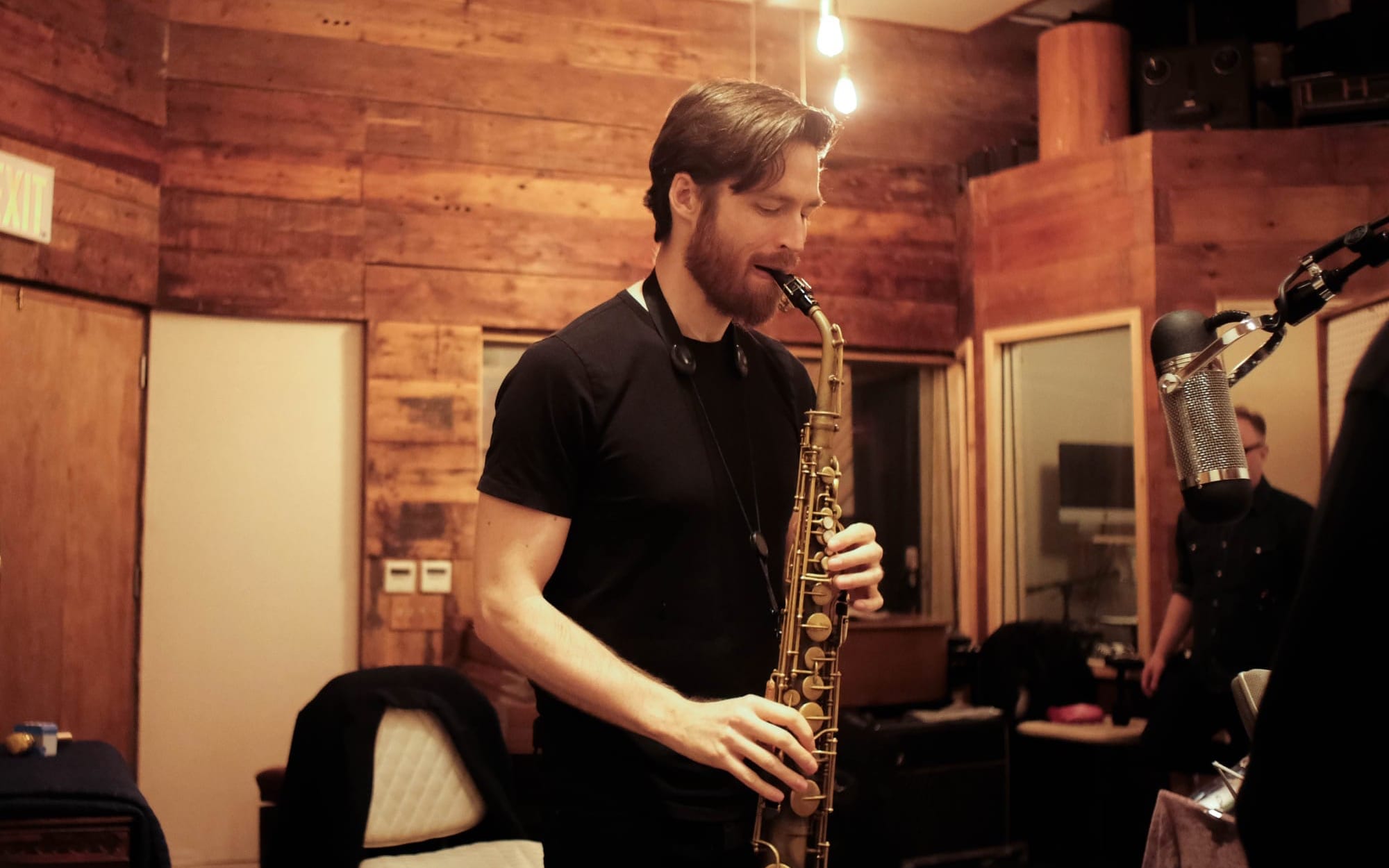
Lawrence: This album feels like world-building or creating a magical space to enter. What is the role of the title of the album? What are you doing with something so evocative?
Caleb: I just want the titles to cause a reaction. "What is the true story of bears and the adventure of the battery?" is a good question. I have many answers to that for myself.
All the songs have their names for a reason. It may be because of how the words sound or how they feel together. I used to think that the titles didn't matter, but I've come around to feeling that everything that goes into the concert or the recording, every single thing, is a choice. As the artist, you can choose not to interact with or interact with those choices. If you, as an artist, don't think about them, then you're leaving an opportunity on the table to create something that can add to the experience.
So, it means the titles of the album. It means the artwork. Some of these things are short decisions. Some of them are long, agonizing decisions. Some of them are because I like how Sun Ra and Henry Threadgill deal with the language of the titles of their songs.
Also, what it might do for the musicians interpreting the pieces doesn't necessarily mean it's some kind of big grand plan, but it could be. Right now, I think the big focus is to make choices and think, "What am I trying to create? What kind of experience am I trying to create?"
I love that feeling of when you interact with some piece of art or music or a film or something out in the world, and you are just struck by something and can't quite figure out why.
I've been thinking a lot about this Arthur Blythe album Spirits in the Field, a trio record with Bob Stewart (tuba) and Cecil Brooks (drums). It was recorded live at Bimhuis in Amsterdam. I had this album when I was a teenager, and I had a CD alarm clock. That record woke me up every morning. I was so confused by that record at the time. But I didn't take it out of the alarm clock, and I heard the beginning of the first tune, which I think is "One Mint Julep," over and over and sometimes some more of the record. I couldn't get rid of it. He touches for me—something about freedom and extremely vocal [alto] playing, that very wide vibrato and bright sound, singing, stretching, making mistakes, and playing great melodies.
So, there was something in there, and later, I found a whole connection for myself with this music. That happens as we experience new music. And it happens in an art museum when you come across a piece, and you're just like, "You don't know what's going on. Why does it have this effect on me?"
Sometimes, you can do that through confusion. In the Sun Ra biography Space is the Place by John Szwed, I read how he rehearsed his band. Sun Ra would rehearse his band with confusion to get them to do what he wanted. We, as listeners to Sun Ra, know what that's like.
Lawrence: Is the Caleb Wheeler Curtis Trio a fixed lineup, and what does it mean regarding repertoire?
Caleb: I have spawned two projects. The experience is generally playing the music from the first disc. Bears and the Invention of the Battery should almost always be Sean Conly and Michael Sarin. If I need to have a sub because of extenuating circumstances, then we will still play that material.
Then I'm also doing the music of Thelonious Monk. I'm trying to call those concerts "Monk the Minimalist," which is the name of the second disc. That is more flexible because this is a repertoire we share in common, that we all have a love for. It gives people an immediate understanding of what will happen in the concert.
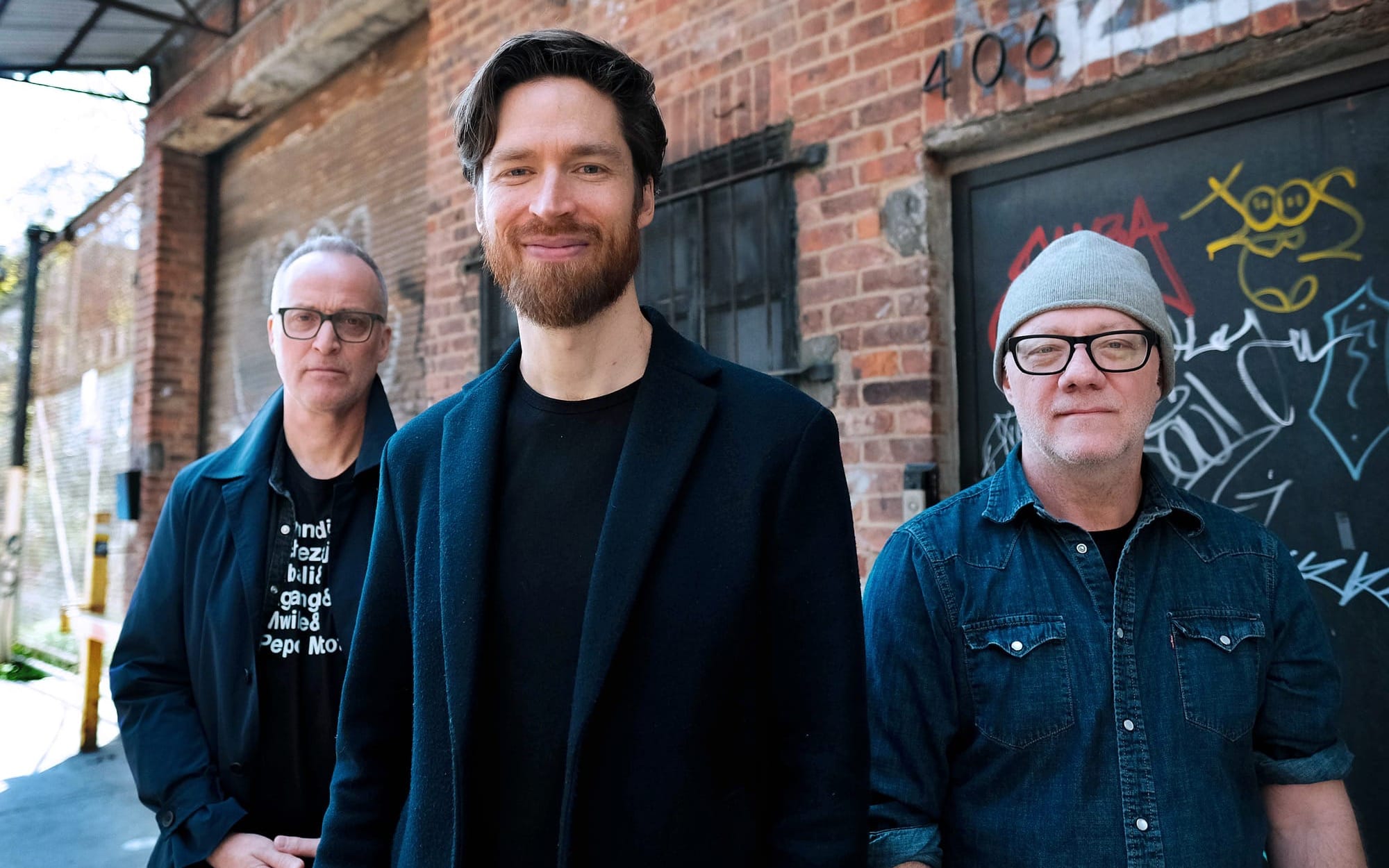
My goal at this moment is to have the Caleb Wheeler Curtis Trio be Sean Conly and Michael Sarin playing from this book of music, from Bears and the Invention of the Battery, and some of my older material from my records HEATMAP and Ain't No Storm. It's about presenting my music.
Through my experience with Ember and Walking Distance and being in other bands, I know what's possible when you always have the same lineup. I've been amazed at what's been possible when you put different amazing cats on the gig, but we can get to something in my trio that hasn't been possible for me as a band leader. I want to keep that going.
Lawrence: Is the Monk configuration always a trio, or do you bring other players in and out because you have that flexibility?
Caleb: I think there's something special about doing the trio without piano and playing the music of Monk. It takes the responsibility off of the pianist to be Thelonious, and I think that it's one of the ways that I can bring some kind of commentary to those pieces because there's no piano. We don't have to deal with the fact that what he's playing in many ways is the song. If you have a piano and don't play the voicings, sometimes it's not the song. That immediately becomes more complicated artistically, making it much harder to think abstractly about those pieces. You start hearing piano, and you're just transported into those bands. For good reason, they're like a gravity well. Just come here and be inside with Larry Gales, Charlie Rouse, and Ben Riley.
The recorded references are like social pressure; you get in a certain musical environment, and you hear that sound, pulling you in there to do what you expect. I am trying to get enough force going in the other direction to break the gravity.
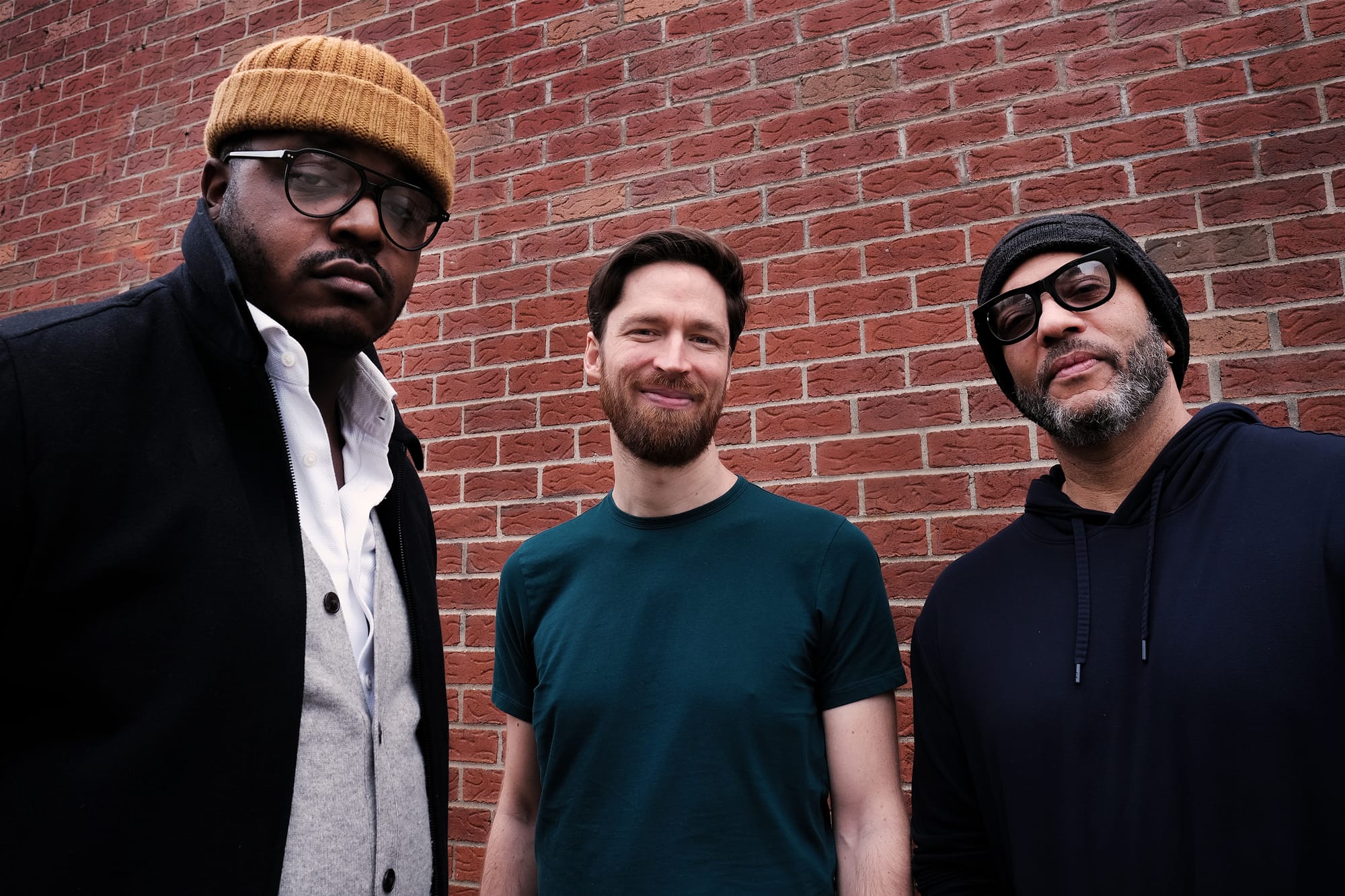
Lawrence: It also feels like not having a pianist and approaching his compositions with different lineups honors his idiosyncrasies in a way that is a spiritual extension of his uniqueness. It strikes me as fitting.
Caleb: He didn't play a lot in his band. He didn't get up and walk around—that's the sound of that music. Inside his music, you have the melodies, and then you have the beat.
Monk's bands were always so strong that playing required this great American quarter note that dictated that we keep going. That quarter note is an important element of the music of this place. That quarter note is inside of Monk, inside Ornette Coleman. I want that in my music.
Caleb Wheeler Curtis has a stacked performance schedule throughout the remainder of 2024. Information on these and other performances can be found on his website:
• Friday and Saturday, October 25 & 26, 7:30 pm: Seattle Jazz Fellowship, Seattle, WA — Caleb Wheeler Curtis Trio with Colson Jimenez (bass) and Michael Sarin (drums)
• Friday, November 1, 7:30 pm: Kerrytown Concert House, Ann Arbor, MI — Monk the Minimalist Trio with Robert Hurst III (bass) and Nate Winn (drums). Ann Arbor is Curtis's Hometown!
• Friday, December 6: Bar Bayeux, Brooklyn, NY — Caleb Wheeler Curtis Trio with Sean Conly (bass) and Michael Sarin (drums)







Comments